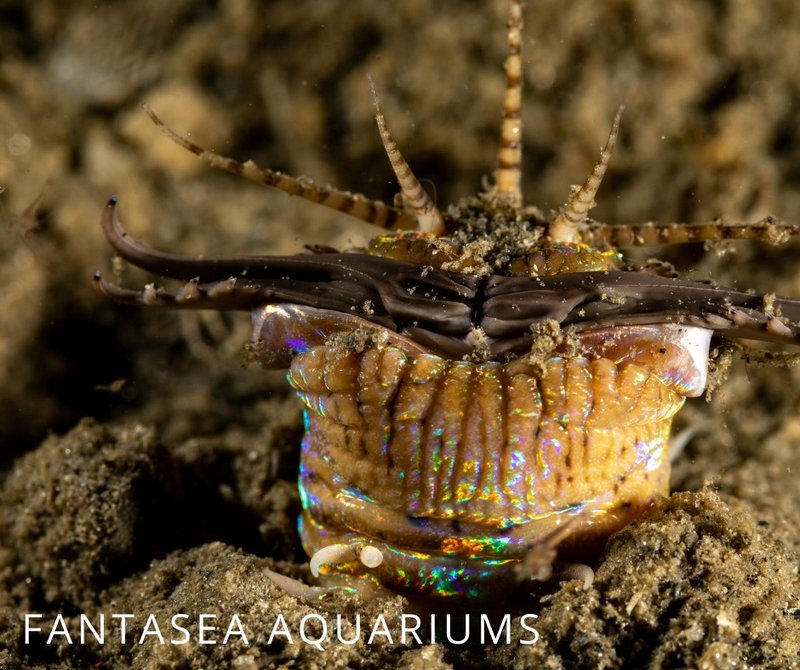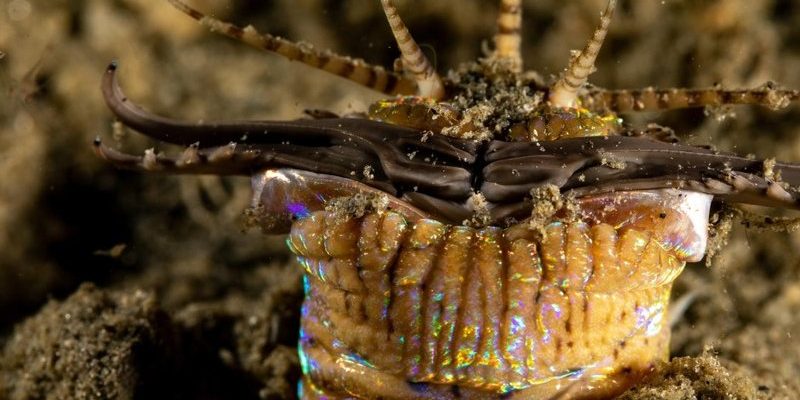
Bobbit worms are fascinating creatures but can lead to losses in fish populations when they invade your tank. They’re not just any worm; these guys can grow several feet long and can be quite stealthy. They wait patiently in the substrate, ready to ambush unsuspecting fish that swim too close. This can feel pretty disheartening, especially if you’ve put time, effort, and love into your tank. But don’t worry; we’ll dive deep into what you need to know about bobbit worms and how to protect your fish.
What Are Bobbit Worms?
Bobbit worms, scientifically known as *Eunice aphroditois*, are marine annelids, which means they’re closely related to earthworms but live in the sea. They’re usually found in tropical waters and can grow to impressive lengths—up to 10 feet in some cases! But you won’t see them just lying around; they prefer to bury themselves in the sand or mud, leaving only a portion of their body exposed. This makes them excellent ambush predators.
Here’s the thing: bobbit worms have a pretty unique hunting strategy. They use sharp, powerful jaws to snatch prey that comes too close. Picture it like a trapdoor spider; they stay hidden and wait for a fish to swim by, then strike! This hunting method makes them particularly dangerous for smaller reef tank fish, like gobies and clownfish. Once they’ve caught their meal, they’ll quickly retreat back into their burrow, leaving little evidence behind.
Bobbit worms can be quite resilient, adapting to various environments. They’re usually found in coral reefs, lagoons, and areas with plenty of detritus for them to consume. They thrive in warm waters and can reproduce easily, making them a significant concern for reef tank enthusiasts.
How Do Bobbit Worms Impact Reef Tanks?
The presence of bobbit worms in your reef tank can lead to some serious fish losses, especially if you have smaller fish. As mentioned earlier, their ambush-style hunting can be devastating. You might notice your fish disappearing without a trace, leaving you scratching your head. If you’ve ever lost a prized fish and wondered how it happened, bobbit worms might be the culprits.
In addition to direct predation, bobbit worms can disrupt the balance of your tank’s ecosystem. When they hunt, they can send fish into a panic, impacting their feeding and behavior. Stress can lead to weakened immune systems in your fish, increasing their susceptibility to diseases. If your fish are constantly on edge because of hidden threats, it can cause an unhealthy environment overall.
Furthermore, bobbit worms can contribute to sediment disturbance within your tank. While they do help aerate the substrate, excess movement can stir up waste and disrupt the delicate balance needed for a thriving reef ecosystem. This can lead to issues like increased nitrate levels, algae blooms, and water quality problems, which further endanger your fish.
Signs of Bobbit Worm Infestation
Identifying a bobbit worm infestation isn’t always straightforward. Often, you might not see the worm itself but will notice the consequences. Here are some common signs that might indicate their presence in your tank:
- Disappearing Fish: If smaller fish start vanishing without a trace, it might be time to investigate.
- Unusual Behavior: If your fish are swimming erratically or appear stressed, it could be a sign that they sense danger lurking.
- Holes in the Substrate: Bobbit worms create burrows in the sand or substrate. If you notice unusual holes or tunnels, check for worms.
- Shortenened Lifespan of Fish: If fish seem to get sick or die more frequently, stress from predators could be the reason.
If you suspect that bobbit worms are causing issues in your tank, it’s vital to take action quickly. The sooner you address the problem, the better your chances of protecting your fish.
How to Control Bobbit Worms in Your Reef Tank
Dealing with bobbit worms can feel like trying to catch a ninja. They’re stealthy and good at hiding. However, there are some effective methods to control or even eliminate them from your tank.
1. **Manual Removal:** If you can identify a bobbit worm, you can try to remove it manually. Use a tool like a pair of tweezers or a specialized fish trap. But be cautious—these worms can bite if provoked!
2. **Increase Fish Size:** Introducing larger fish that can defend themselves may help. Fish like lionfish are known to hunt bobbit worms. Just be careful about adding aggressive fish to your community tank.
3. **Modify the Substrate:** Consider changing or mixing up your substrate. Adding larger grains can deter bobbit worms from burrowing so easily, while still being comfortable for your fish.
4. **Regular Maintenance:** Keep your tank clean! Regular water changes, substrate vacuuming, and proper filtration can help maintain a healthy environment and minimize bobbit worm impact.
5. **Pest Control Species:** Some reef-safe species like certain crabs can help keep bobbit worm populations in check. Just research beforehand to ensure they won’t harm your fish.
Preventing Bobbit Worms in the First Place
The best way to deal with bobbit worms is to prevent them from getting into your tank at all. Here are some proactive steps you can take:
– **Quarantine New Additions:** Always quarantine new fish or corals for a few weeks before introducing them to your main tank. This will help catch any pests or diseases before they spread.
– **Buy from Reputable Sources:** Make sure to purchase fish and corals from trusted vendors. They are less likely to sell infested specimens.
– **Inspect Substrates and Live Rock:** If you’re adding live rock or substrate to your tank, inspect it carefully for signs of unwanted critters. If it looks suspicious, consider treating it before adding it to your tank.
– **Use a BPA-Free Plastic Barrier:** If you’re creating a new tank, consider putting a plastic barrier below the substrate to keep pests like bobbit worms from getting too comfortable.
Here’s the thing: staying vigilant and proactive can save you a lot of heartache down the road.
Understanding the Bigger Picture
While bobbit worms can cause problems, they also play a role in the marine ecosystem. They help break down organic matter and aerate the sediment where they live. Understanding their role can help you manage your tank better.
Think of it like this: it’s all about balance. You want to foster a healthy environment for your fish while also recognizing that some creatures exist in your tank to serve a purpose. The challenge lies in finding ways to have bobbit worms coexist without letting them become a threat.
In summary, managing bobbit worms and protecting your reef tank fish involves a mix of vigilance, prevention, and effective control strategies. By understanding these creatures and their impact, you can create a thriving aquatic environment that remains colorful and full of life. With the right care, your reef tank can continue to be a beautiful, stable habitat for your fish.
Bobbit worms might seem intimidating, but with the right knowledge and actions, you can keep their impact minimal and ensure your fish stay safe. Happy reefing!

